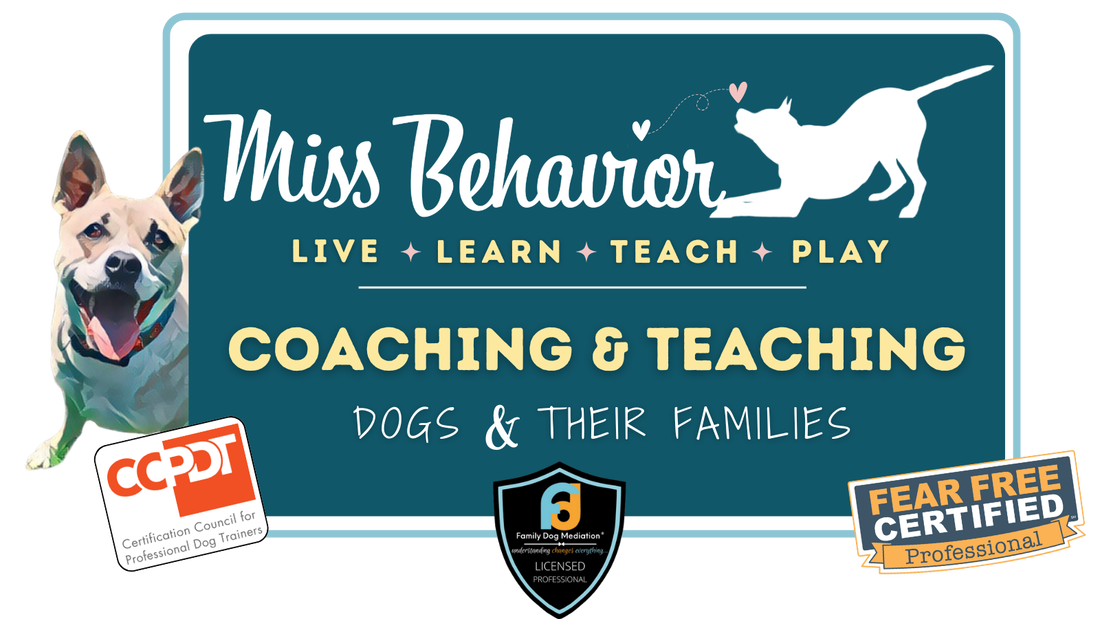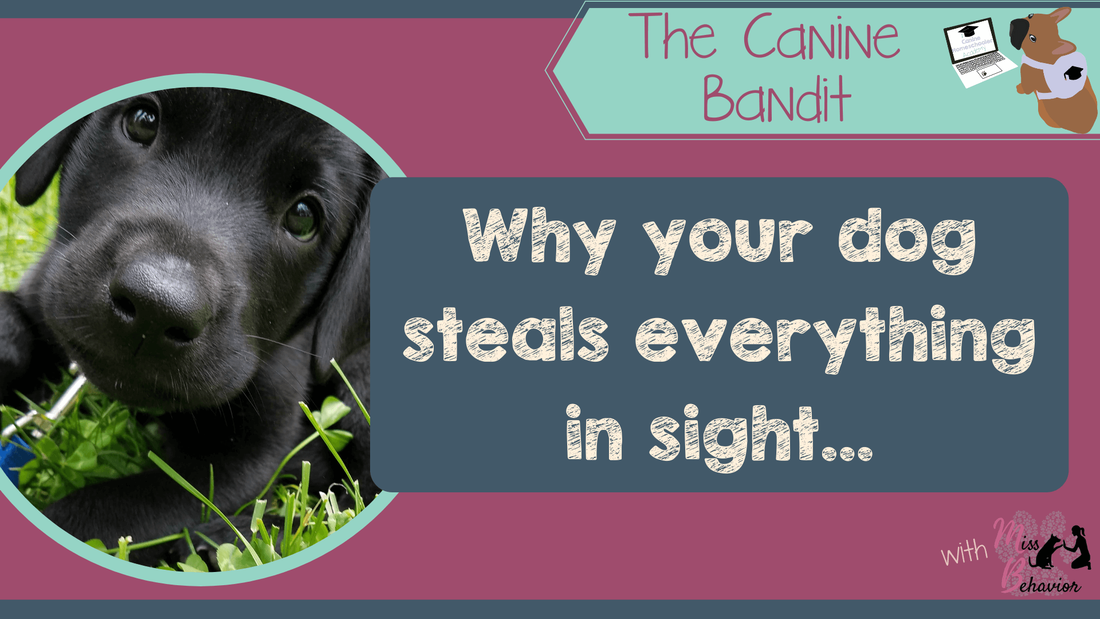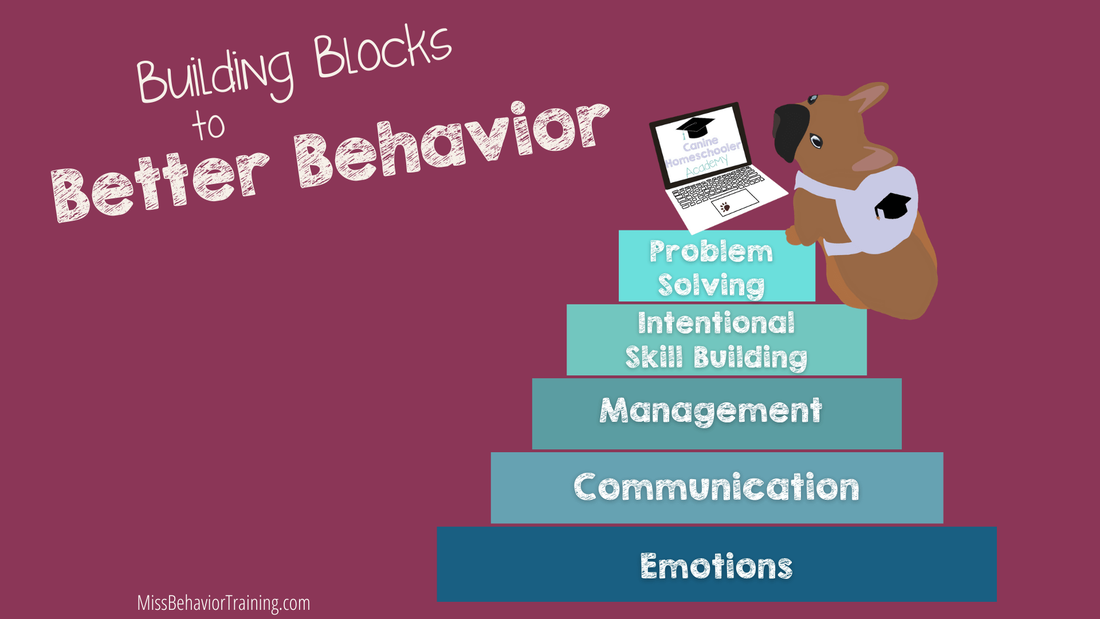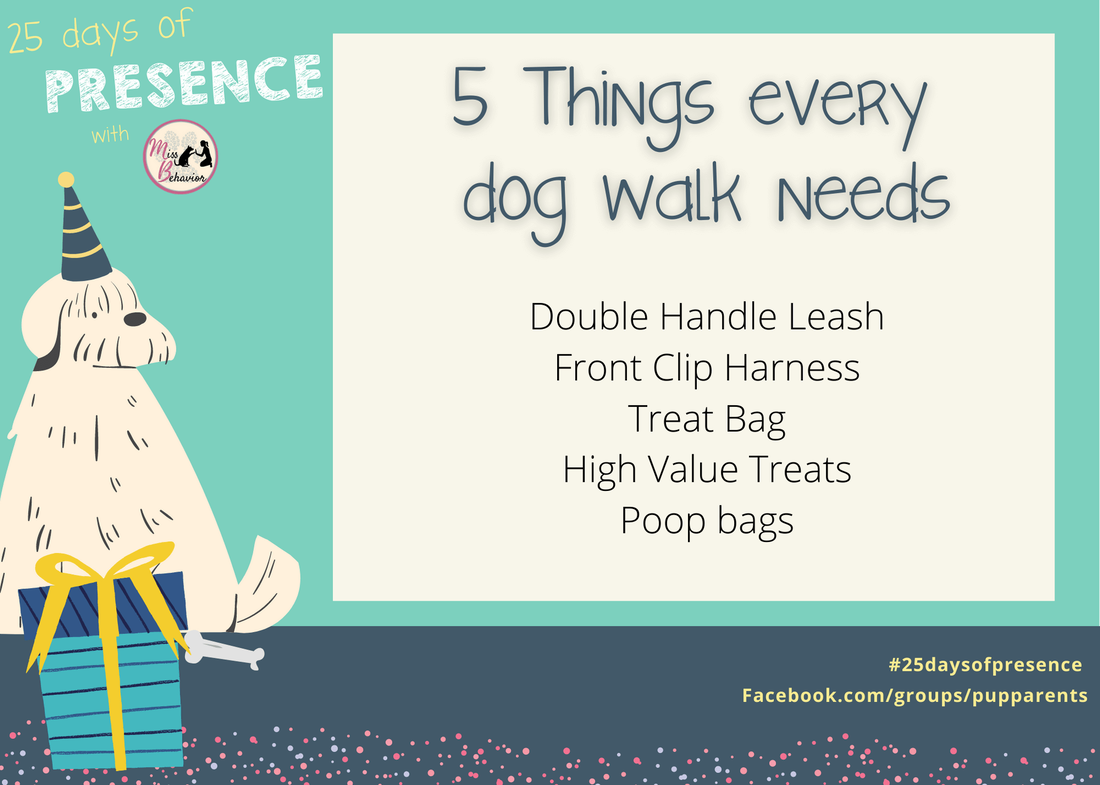Here are the stages that will help set your training progress up for successWhen you are dealing with big emotions in dogs, it's important to break down the training process into smaller achievable goals that set everyone up for success.
Reactivity is simply responsiveness to a stressor, trigger, or something exciting in the environment. It can be really difficult for them to think or learn when they are in that state of mind, just as it can be hard for you to take in new information when you're in the same state of mind. When we expect too much from our dogs too soon, it can really set back our training progress leaving both ourselves and our dogs very frustrated and feeling defeated. For that reason, I'm going to show you the 6 stages to focus on to help find your success path in the training process
1 Comment
So how can I refer to what I do?Yes, technically, I am a Certified Professional Dog Trainer but it just doesn't sit right. It's not about getting dogs to "obey"
I had to take some time to think about how I approach the process of helping dogs and their people learn. I am always paying attention to body language, considering emotions, trying to keep things playful, breaking learning down into smaller digestible chunks, building trust, setting boundaries and remaining consistent with them. A-HA. I figured it out! If you are living with and loving an emotional, excitable, or reactive dog, let me share the top 10 things he wants you to know...Living with reactive dogs isn't easy. It can be frustrating, lonely, exhausting, confusing and full of rabbit holes, too much information, not enough information, a whirlwind. Let's narrow it down. Today, I'm going to share the top 10 things that I know your dog probably wants to tell you. Because I've been working with dogs for so long, I'm confident that your dog would agree with the pieces of knowledge I'm sharing here
Do you know why your dog ignores you?You know those times when you have somewhere to be and you need to call your dog to come inside but he just takes his time responding? Or maybe he even plays a little game of keep-away at the most inconvenient time? It happens to everyone! There are many reasons why your dog might ignore you or get distracted by something else but all those reasons can be pretty easily summed up into 5 main categories. This will help you better understand how to start to work on the problem so that you can start getting better attention from your family dog!
7 Essential Skill Building Rules for your Family Pup Every new dog skill taught can have many uses as replacements for problem behaviors so whether you're frustrated with your dog and want to teach him something new to replace a "misbehavior" or you want to teach your dog fun tricks for relationship building, there are 7 key rules to keep in mind when teaching your dog anything new!
Do you have a dog who loves to put everything in his mouth?Do you know the 3 main reasons why dogs will often steal items they shouldn't have?
Here's what you need to know, in order to get to better behavior with your dog
Whether you're questioning a problem behavior in your dog, you are wondering how to teach a new behavior, or you just brought home a new family member and are just wondering where to start, there are 5 important building blocks to making your way to better behavior with your dog!
11/29/2020 0 Comments Favorite Walking Gear11/25/2020 0 Comments Hosting a Thanksgiving meal?Here are some quick tips to keep your pup busy and safe during your feast!
Days like this are about the management, not the training. Hosting a meal or guests can be stressful enough. Use the day of to apply good management techniques and worry about changing any problem behaviors on another day
11/24/2020 0 Comments What's the behavior you want?When you are dealing with problem behaviors, there are two main directions you can go in, two paths to changing the behavior. Just like with kids, we can tell our dogs NO all the time, but it's exhausting. And it can be an uphill battle. So let's explore the two paths... Path A: Stop the problem behavior. Remove attention, remove access, give consequences (never physical). Tell your dog NO, don't do that. Stop running away. Stop begging. Stop jumping. Essentially, you have to wait for the behavior to happen so you can tell your dog not to do it. Or... Path B: Teach your dog a skill that is incompatible with the problem behavior. Your dog takes off with socks? Teach him to bring it. He can't run away with an item and bring you an item at the same time Your dog begs at the table? Teach him to stay on his bed. He can't beg and be in his bed at the same time Your dog runs away when you are trying to get him to come? Teach him to target your hand (touch your hand with his nose). He can't run away from you and offer that behavior at the same time What problem behavior are you dealing with? What could you intentionally teach your dog to replace that behavior? So Path A or Path B. It's your choice but I know what I would prefer! If you need help learning HOW to teach those replacement behaviors, that's exactly what my Elementary Pup Course in the Canine Homeschooler Academy teaches you
|
|
- Home
- About
- Blog
- Services
- Membership
-
Courses & Freebies
- All Courses
- FREE Boredom Buster Recipes
- COURSE: Building Resilience in your Family Dog
- COURSE: Managing the Leash Walk
- Potty Training COURSE
- Paws Off COURSE
- COURSE: Managing the Leash Walk
- FREE Attention Building Challenge
- FREE Scratchboard Training
- FREE Rest and Recovery Round-Up
- FREE Body Language 101
- Contact
- Home
- About
- Blog
- Services
- Membership
-
Courses & Freebies
- All Courses
- FREE Boredom Buster Recipes
- COURSE: Building Resilience in your Family Dog
- COURSE: Managing the Leash Walk
- Potty Training COURSE
- Paws Off COURSE
- COURSE: Managing the Leash Walk
- FREE Attention Building Challenge
- FREE Scratchboard Training
- FREE Rest and Recovery Round-Up
- FREE Body Language 101
- Contact
Search by typing & pressing enter
















 RSS Feed
RSS Feed





